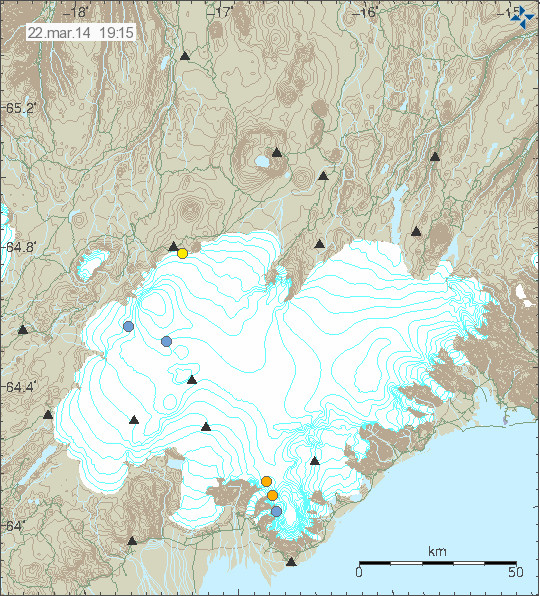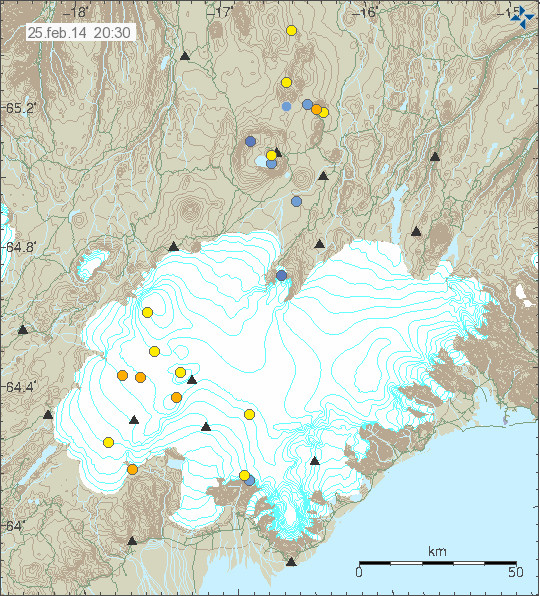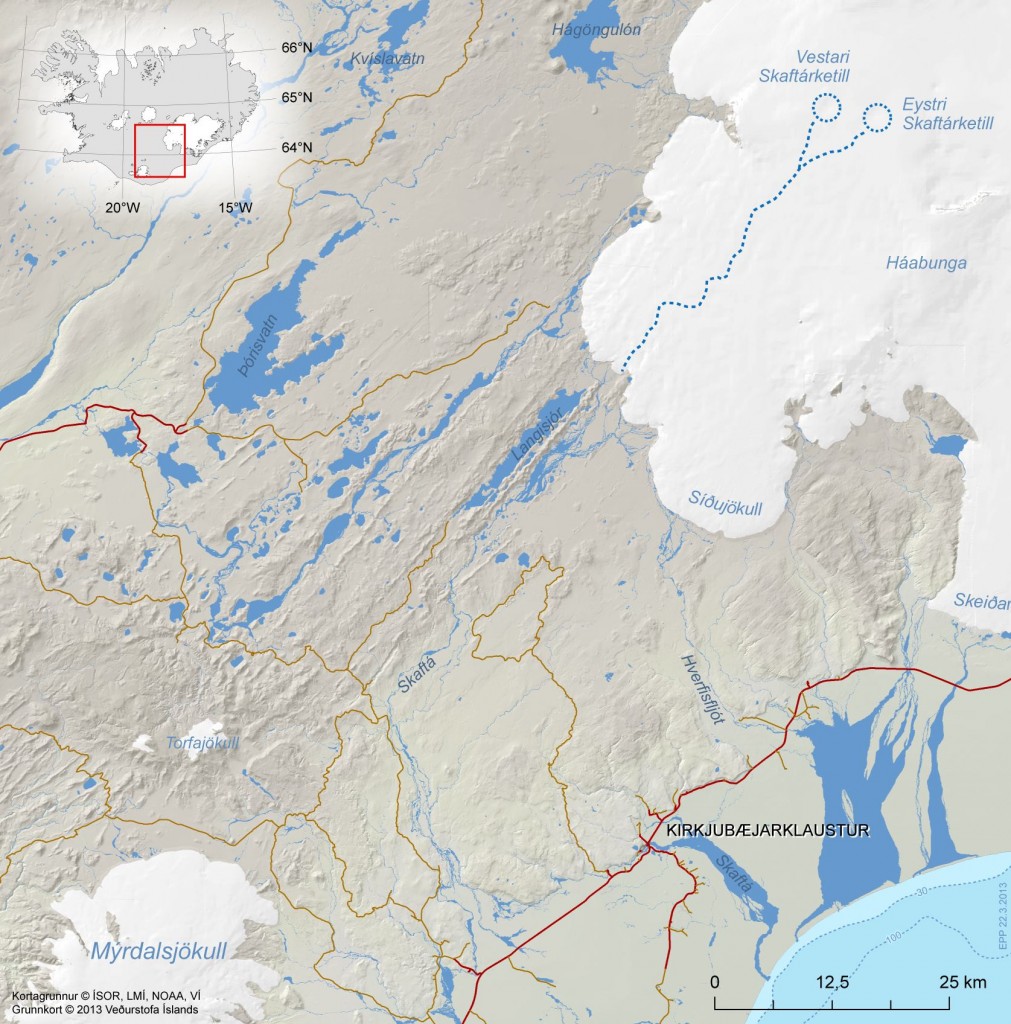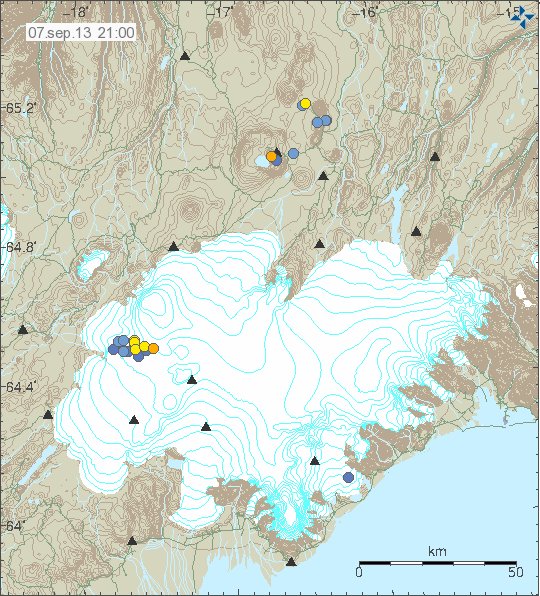Today (11-September-2015) an earthquake swarm started in Hamarinn volcano (no GVP profile, see Bárðarbunga volcano). This is a volcano that is inside Bárðarbunga volcano fissure swarm and might be connected to it, that connection is unclear, but historical data suggests that once Bárðarbunga volcano gets erupting sometimes Hamarinn volcano does too. There is a similar pattern in Grímsfjall volcano and Þórðarhyrna volcano (no GVP profile) as an another example.
Current sequence of earthquakes in Hamarinn volcano started with a small earthquake at 22,5 km depth. Few shallower earthquakes happened before that event, those earthquakes however might be connected to changes in hydrothermal systems in the volcano, rather then something else. The deep earthquake that took place started a series of smaller earthquakes at shallower depth, suggesting that pressure is already high inside the volcano, how close it might be to erupting is impossible to know, but the clues that I’m not seeing do not look good. This might die out, but I think the chance of that are small. Last eruption in Hamarinn volcano took place in July-2011, I wrote about it here, here and here.

Current area of activity in Hamarinn volcano. This area is covered with a thick glacier up to 300 – 400 meters. Copyright of this image belongs to Iceland Met Office.
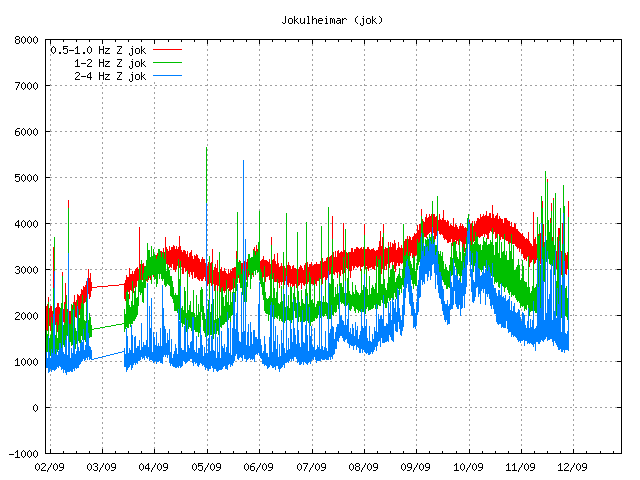
Harmonic tremor data is showing that current earthquake activity are low and long period earthquakes (green and red spikes). I also noted that on this image a harmonic tremor spike can be seen on the green band. It does not appear visible on the red and blue bands. I’m unclear on why this is. Copyright of this image belongs to Iceland Met Office.
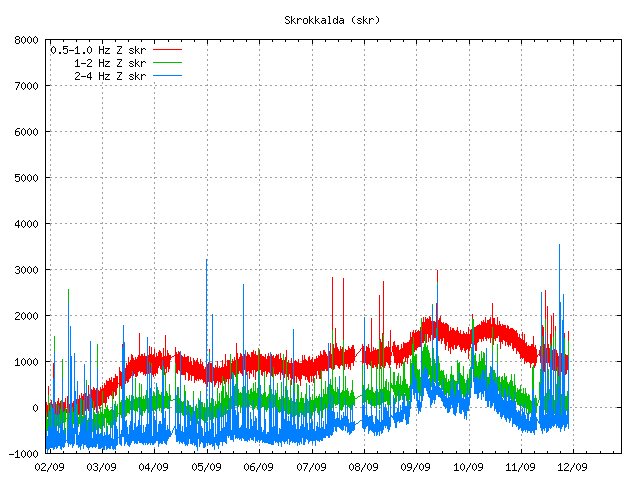
The harmonic tremor spike does not appear on the SIL station Skrokkalda. I don’t know why that is. Earthquake activity appears clearly on it (spikes). Copyright of this image belongs to Iceland Met Office.
Activity in Tungafellsjökull volcano
There has been interesting earthquake activity in Tungafellsjökull volcano today. Today earthquake swarm started with the depth of 12,3 km and it mostly stayed there. Suggesting that magma dyke injections are taking place in the volcano at the moment. If and when this might lead to an eruption is impossible to know. Magma might be at shallower depth already due to high activity during the eruption in Bárðarbunga volcano.

The earthquake activity in Tungafellsjökull volcano, it’s located north of both Bárðarbunga and Hamarinn volcano (NE of Hamarinn). Current activity is a small cluster of earthquakes in north-east part of Tungafellsjökull volcano. Copyright of this image belongs to Iceland Met Office.
Largest earthquake in this swarm so far had the magnitude of 1,9. It was also the shallowest earthquake in this swarm. So far no change on the surface of Tungnafellsjökull volcano, meaning that no hydrothermal vents have appeared so far. That might not happen since formation of hydrothermal vents does not always happen before an eruption.


